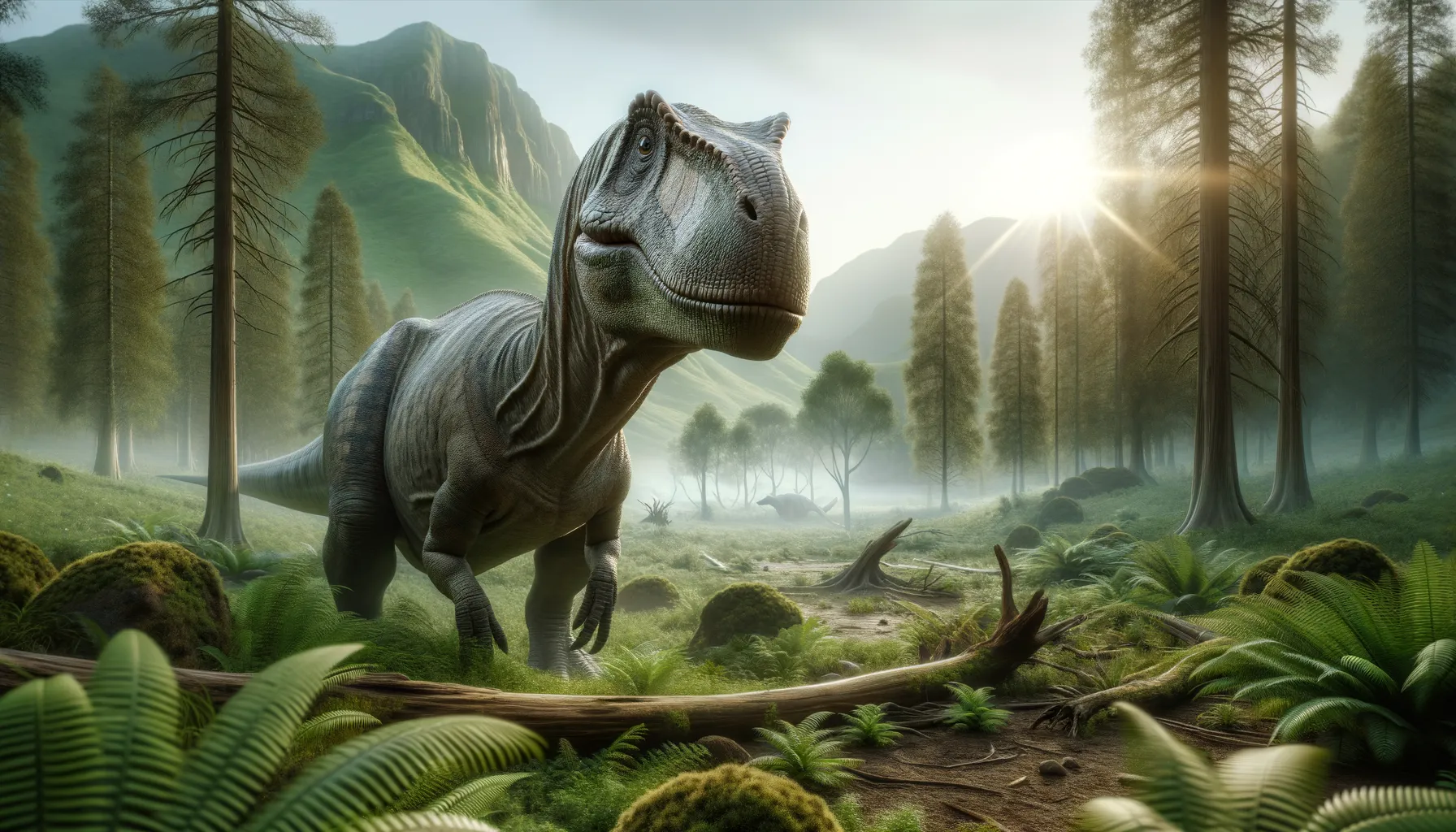
Datonglong
A duck-billed mystery from ancient China.
Period
Cretaceous
Length
Close to 8 meters long.
Height
Approximately 3 meters tall.
Weight
Around 1,500 kilograms.
Datonglong was a herbivorous dinosaur from the Late Cretaceous period, belonging to the hadrosaurid family, which is often referred to as 'duck-billed' dinosaurs due to their distinctive snouts. Known primarily from fossils found in Shanxi, China, Datonglong contributed to our understanding of hadrosaur diversity and distribution in Asia.
Diet
Datonglong was herbivorous, feeding mainly on the vegetation available in its environment. Its diet likely included a mix of ferns, conifers, and flowering plants that were common during the Late Cretaceous.
Hunting
As a herbivore, Datonglong did not hunt for food. It foraged for plants and relied on its keen sense of smell to locate food sources.
Environmental challenges
Datonglong faced several environmental challenges, including changing climates and shifting vegetation patterns. Predators of the period, like large theropods, posed a significant danger. Seasonal variations in plant availability would have also influenced its foraging habits and potential migration for better feeding grounds.
Speed
Moderate speed, typical for a hadrosaurid.
Lifespan
Estimated 20-30 years.
First discovery
Described in 2015 from Shanxi, China.
Fun Facts
- Datonglong was a dinosaur that lived during the Early Cretaceous period, about 130 million years ago.
- The name 'Datonglong' means 'Datong dragon', named after the city near where its fossils were found in China.
- Datonglong was part of a group of dinosaurs known as hadrosaurs, commonly referred to as duck-billed dinosaurs because of their flat, broad snouts.
- Unlike some of its larger relatives, Datonglong was relatively small, reaching an estimated length of 5 to 6 meters (16 to 20 feet).
- Datonglong's teeth were well-suited for chewing vegetation, as it lived in an environment that was rich in plants, ferns, and cycads.
- Scientists believe that Datonglong may have walked on either two or four legs, depending on its activity and speed.
- The fossils of Datonglong were discovered in the Shanxi Province of northern China, adding valuable insights into the diversity of dinosaurs in that region.
Growth and Development
Datonglong, like other hadrosaurids, likely followed a rapid growth pattern typical of dinosaurs. Juveniles would have grown quickly to reduce vulnerability to predators. Its development stages might have required a high intake of vegetation to sustain such growth, influencing its social dynamics within herds.
Habitat
Datonglong inhabited areas that were likely lush and fertile, with abundant plant life to support its herbivorous diet. Wetlands and floodplains provided an ideal environment for these dinosaurs. This habitat fostered a rich biodiversity, suggesting a complex ecosystem in which Datonglong thrived.
Interaction with other species
Datonglong coexisted with various other dinosaur species, likely forming mixed herds for protection against predators. Their presence in diverse ecosystems suggests they may have competed with other herbivores for resources. Social behaviors might have included communicating with sound or visual displays to reinforce social bonds.
Natural lifespan
Datonglong had an average natural lifespan of about 25 years.
Reproduction
Like other hadrosaurs, Datonglong likely laid eggs in nests, which were carefully constructed in safe locations. Parental care might have included guarding eggs and young. The species possibly had specific breeding seasons to ensure optimal conditions for offspring survival.
Social behaviour
Datonglong likely traveled in herds, which offered protection from predators. Its social structure may have been complex, with communication playing a vital role. This social setting provided safety and facilitated learning and development for younger members.
Fossil locations
Datonglong fossils have been primarily located in Shanxi Province, China. This region has yielded several important dinosaur fossils, enhancing our understanding of the Late Cretaceous fauna in Asia. Continuous excavation in these areas may uncover further significant paleontological finds.
